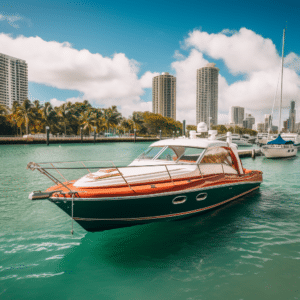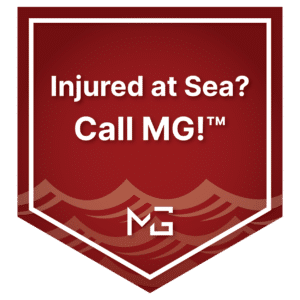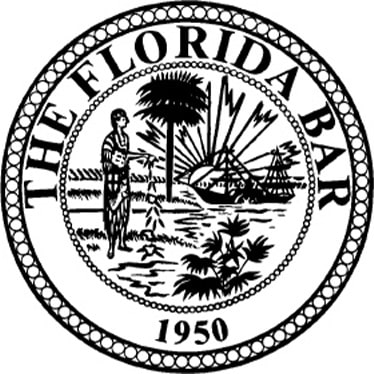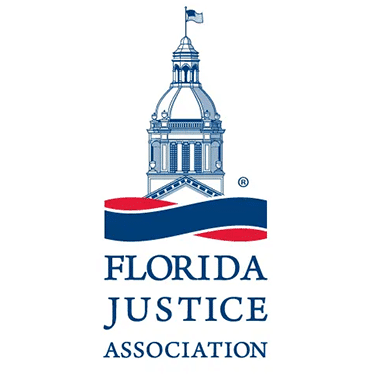
How many boat accidents per year? Over 5,000 boating accidents are reported annually, leading to crucial safety concerns. In this article, we present the facts, examine the causes, and provide guidelines for accident prevention—information every boater should be equipped with to minimize risks on the water.
Key Takeaways
- Over 5,000 boating accidents are reported annually in the U.S., with factors such as human error (including alcohol use and operator inattention), equipment failure, and environmental conditions predominantly leading to accidents.
- A significant number of boating fatalities, particularly from drowning, could be prevented with proper life jacket usage, as 85% of drowning victims in 2022 were not wearing one.
- Preventive measures for reducing boating accidents include adhering to safe boating practices, respecting speed limits, and being prepared for weather changes, alongside the importance of wearing life jackets and having safety equipment onboard.
Contact us today for your free & confidential case review. Our team will help you get the compensation that you deserve.
 Annual Boat Accident Statistics
Annual Boat Accident Statistics
Many people love recreational boating, but it’s associated with a substantial number of accidents annually. Over 5,000 boating accidents occur annually in the United States, leading to hundreds of fatalities, thousands of injuries, and millions of dollars in property damage. In 2020, there were 5,265 boating accidents reported by the coast guard, leading to 767 fatalities, 3,191 injuries, and an estimated $62.5 million in property damage.
A range of boat types, including personal watercraft and cabin motorboats, often feature in these accidents. Regardless of the vessel, the consequences can be severe and life-altering. The highest number of boating accidents were reported in Florida, North Carolina, and Texas, emphasizing the need for boating safety instruction in these states.
Number of Accidents
A closer look at the statistics reveals that while not all boating accidents result in fatalities, serious injuries and significant property damage are common outcomes. While there was a slight decrease in the number of most boating accidents in 2022 compared to the previous year, the impact of these incidents remains substantial.
Collisions between recreational vessels constitute the most common type of boating accident. These incidents can lead to both fatal and non-fatal injuries, often causing considerable damage to the vessels involved.
Fatalities and Injuries
Even with safety measures in place, fatal boating accidents cause hundreds of fatalities and thousands of injuries every year. In 2021 alone, there were 266 reported deaths and 1,802 injuries resulting from boating incidents. This alarming number underscores the risks involved in boating and the importance of following safety guidelines for both boaters and fatal boating accident victims’ families.
Drowning is the primary cause of death in boating accidents, accounting for 76% of all boating fatalities. In fact, drowning incidents are the most fatal boating accidents. Alcohol use is recognized as the leading contributing factor to these incidents. Other hazardous types of boating accidents include collisions with other vessels, flooding/swamping, and grounding.
Property Damage
Apart from posing physical dangers, boating accidents also inflict significant financial losses. In 2020, the property damage caused by boating accidents amounted to around $62.5 million. This includes damage to boats, docks, and other property such as marine facilities.
Who bears the brunt of these financial losses? Typically, insurance companies cover property damage in boat accidents, provided that boat owners have the necessary insurance policies that include liability coverage. However, this highlights the importance of having adequate insurance coverage, and the role of boat owners in mitigating the risks of boating accidents.
Factors Contributing to Boat Accidents
Comprehending the primary contributing factors that lead to boat accidents is key to their prevention. These factors can be broadly categorized into human error, equipment failure, and environmental conditions.
Each category presents unique challenges and requires different preventive measures. For instance, human errors like alcohol use, operator inattention, and inexperience are often preventable with proper boating safety instruction and responsible behavior. Equipment failure can be mitigated with routine maintenance and checks. Awareness and preparedness for adverse environmental conditions can significantly reduce the likelihood of accidents.
Human Error
Boating accidents primarily result from human errors such as alcohol consumption, operator inattention, and lack of experience. Alcohol use is particularly dangerous, with approximately 50% of all boating accidents associated with drugs or alcohol.
Operator inattention, encompassing lack of full awareness or distraction while operating the vessel, is another significant contributor to boating accidents. Lack of experience can also lead to accidents, particularly in unfamiliar or unpredictable circumstances. This underscores the importance of boating safety instruction and responsible behavior on the water.
Equipment Failure
Another significant cause of boat accidents is equipment failure, notably machinery malfunctions. For instance, engine failure is a common cause of boating accidents. The complexity of boat engines can lead to failure due to various reasons if not adequately maintained.
Regular maintenance and proper operation of the boat are pivotal to prevent such failures. It is crucial for boat operators to have a thorough understanding of their equipment and to receive boating safety instruction to mitigate these failures.
Environmental Conditions
Environmental factors like hazardous waters and adverse weather conditions can notably increase the risk of boat accidents. For instance, bad weather conditions were a contributing factor in fatal accidents, leading to 30 deaths occurred out of 178 fatal accidents.
Adverse weather conditions can result in large waves that can capsize boats or displace passengers, diminish visibility for navigation, and increase the likelihood of collisions. Understanding and respecting the power of nature is key to safe boating.
Types of Boats Involved in Accidents
While boating accidents can involve various vessels, certain types of boats feature more frequently. The types of boats typically involved in accidents include open motorboats, personal watercraft, and cabin motorboats.
Each boat type has its unique characteristics and challenges that can contribute to accidents. For example, personal watercraft are involved in 18% of boating accidents, due to their high speeds and maneuverability. Understanding the common risks associated with each boat type can help operators take appropriate precautions.
Personal Watercraft
Personal watercraft, such as jet skis, are popular for their speed and agility. However, these same characteristics can also lead to accidents. The leading cause of personal watercraft accidents is reckless or careless driving.
Injuries such as rapid deceleration, ejection from the craft, and collision impacts are common in personal watercraft accidents. Therefore, operators of personal watercraft should be particularly mindful of safety guidelines and precautions.
Cabin Motorboats
Cabin motorboats are also often involved in accidents. Operator inexperience and inattention are leading causes of such incidents. In 2022, there were 4,040 reported accidents involving cabin motorboats, leading to 636 fatalities and 2,222 injuries.
The primary factors contributing to cabin motorboat accidents include collisions with recreational vessels and other objects, as well as flooding or swamping of the boat. Hence, cabin motorboat operators should receive adequate boating safety instruction and maintain a vigilant lookout while on the water.
Auxiliary Boats and Boating Safety
Auxiliary boats, such as sailboats equipped with engines, require additional safety precautions due to their unique design and operation. For instance, they should have red, green, and white navigation lights, and be cautious of the mast’s potential conductivity to lightning. By following these auxiliary and boating safety measures, you can ensure a safe and enjoyable experience on the water.
Notably, these boats also require specific training and certifications for operation. For example, passing an Auxiliary Navigation Rules exam for coxswains or completing Safe Boating America classes may be necessary. Adhering to these safety measures can significantly reduce the risk of accidents.
Contact us today for your free & confidential case review. Our team will help you get the compensation that you deserve.
Importance of Life Jackets and Safety Equipment
A discussion on boating safety is incomplete without considering life jackets and safety equipment. These tools are crucial in preventing fatalities and injuries in boating accidents. Regrettably, a substantial number of boating fatality victims could have potentially been saved had they been wearing a life jacket.
Aside from life jackets, other safety equipment such as fire extinguishers, flares, and first aid kits can also help prevent accidents and minimize damage when they occur. Ensuring that these tools are readily accessible and in good working condition is a must for every boater.
Life Jacket Usage Statistics
Life jackets, although simple, are a powerful tool capable of greatly enhancing survival rates in boating accidents. Statistics show that a shocking 85% of drowning victims were not wearing life jackets. In 2022, among the drowning victims with reported life jacket usage, 86% were found not to have been wearing a life jacket.
These striking statistics underscore the importance of wearing life jackets while on the water. A significant 85% of boating accident survivors were found to be wearing life jackets at the time of their accident, highlighting the crucial role of life jacket usage in ensuring survival.
Types of Safety Equipment
Boats should be equipped with a variety of safety equipment to ensure the safety of all on board. This includes wearable and throwable personal flotation devices, fire extinguishers, and visual signaling devices.
Marine fire extinguishers, which are designed to tackle Class B and Class C fires, are particularly crucial. Additionally, the presence of a distress flag and a well-stocked marine first aid kit can make a significant difference in emergency situations.
Tips for Preventing Boat Accidents
Comprehending the factors leading to boat accidents is only the beginning. Knowing how to prevent these accidents carries equal importance. Key preventive measures include adhering to safe boating practices, respecting speed limits, and being weather-aware.
Each of these measures requires conscious effort and dedication from the boat operators. They need to understand the risks, stay vigilant, and be prepared to react appropriately in unforeseen circumstances. Let’s delve deeper into these preventive measures.
Safe Boating Practices

- Boat inspections for potential issues
- Weather advisories and forecasts checks
- Horizon monitoring
- Defensive boating
- Adherence to local speed limits
- Ensuring sufficient life jackets on board.
These practices ensure that operators are fully aware of their surroundings and prepared to react to any unexpected situations. A proper lookout, for instance, allows the operator to monitor the situation, assess the risk of collision, and implement necessary measures to prevent accidents. On the other hand, an improper lookout can lead to dangerous situations and potential accidents.
Speed Limits and Operator Behavior
Many boating accidents can be attributed to speed. Sticking to speed limits affords operators more time to respond to unexpected situations and safely navigate around other watercraft and obstacles, reducing collision chances.
Responsible operator behavior also plays a crucial role in preventing accidents. This includes avoiding reckless actions, such as excessive speed, particularly in crowded areas, as well as erratic or aggressive maneuvers.
Weather Awareness
The weather can change swiftly, and lack of preparedness for such changes can cause accidents. Thus, checking the forecast, especially the marine weather forecast, before setting out is vital for boating safety.
In the event of unexpected weather changes while boating, it is crucial to:
- Reduce speed
- Activate all running lights
- Listen for sounds of other boats or fog horns
- Keep life jackets within reach
- Be familiar with the route to shore
- Seek out a clear route back to safety.
Frequently Asked Questions
What is the number 1 cause of boating accidents?
The number 1 cause of boating accidents is often operator inattention or inexperience, which can lead to critical errors in judgment on the water.
How many boats capsize per year?
More than 5,000 boats capsize each year in the United States, leading to more than 800 deaths annually from drowning and other causes, along with numerous severe injuries.
How many boating accidents are caused by alcohol?
Alcohol is the leading known contributing factor in 15 percent of fatal boating accidents.
What is the leading cause of death in boating accidents in Florida drowning?
Yes, the leading cause of death in boating accidents in Florida is drowning, accounting for about 64% of the total boating accident deaths in 2022.
What type of boating activity causes the most fatalities?
The leading cause of boating emergency fatalities is drowning and submersion, often resulting from unexpected swells, bad weather, or overloaded boats. Proper weight distribution and functioning bilge pumps are crucial for boating safety.
Last updated Tuesday, July 16th, 2024

 Annual Boat Accident Statistics
Annual Boat Accident Statistics







